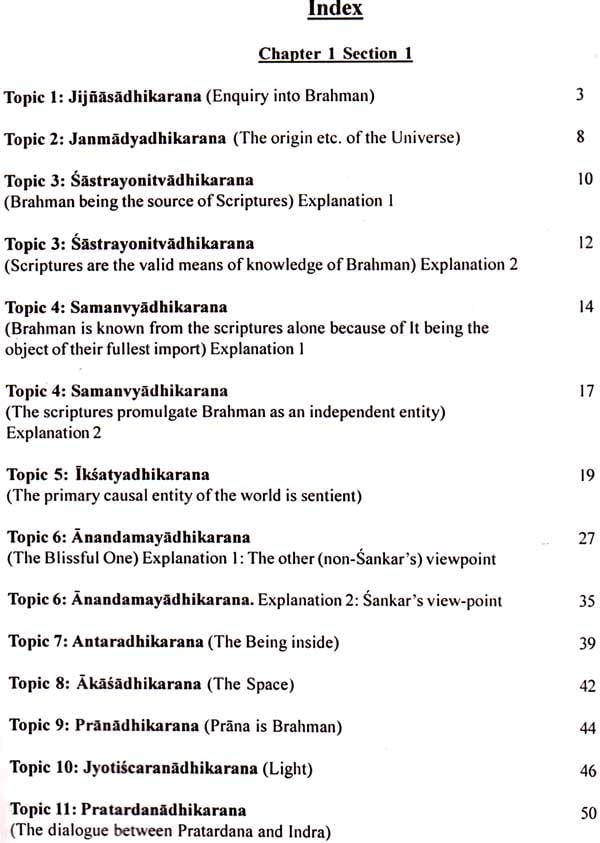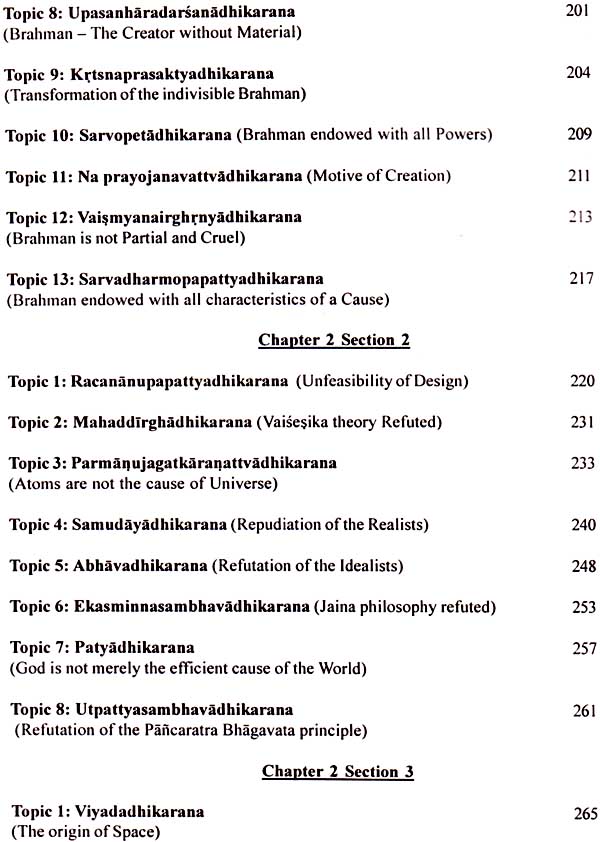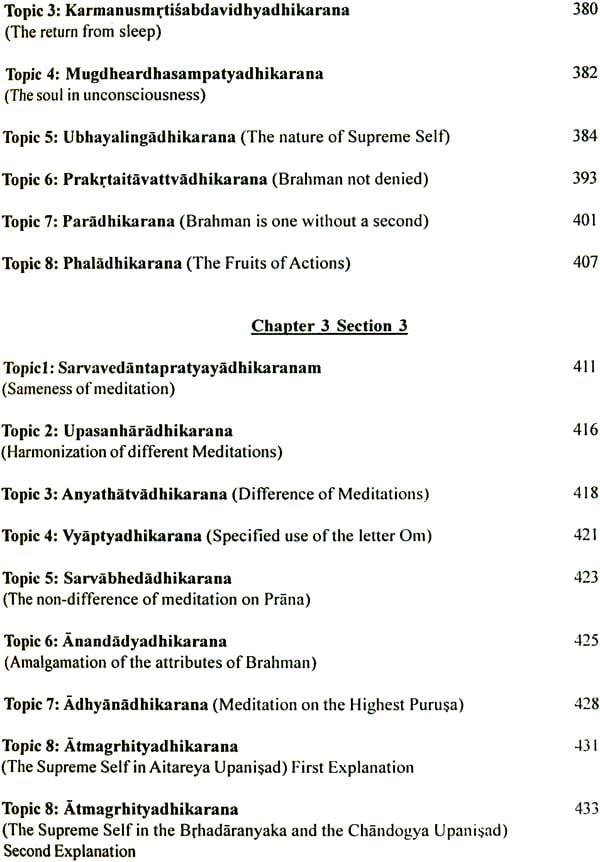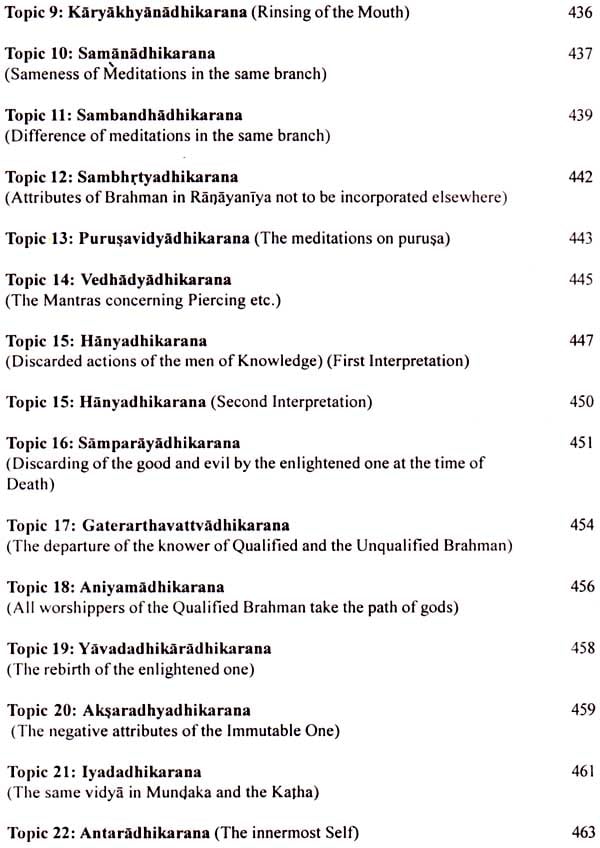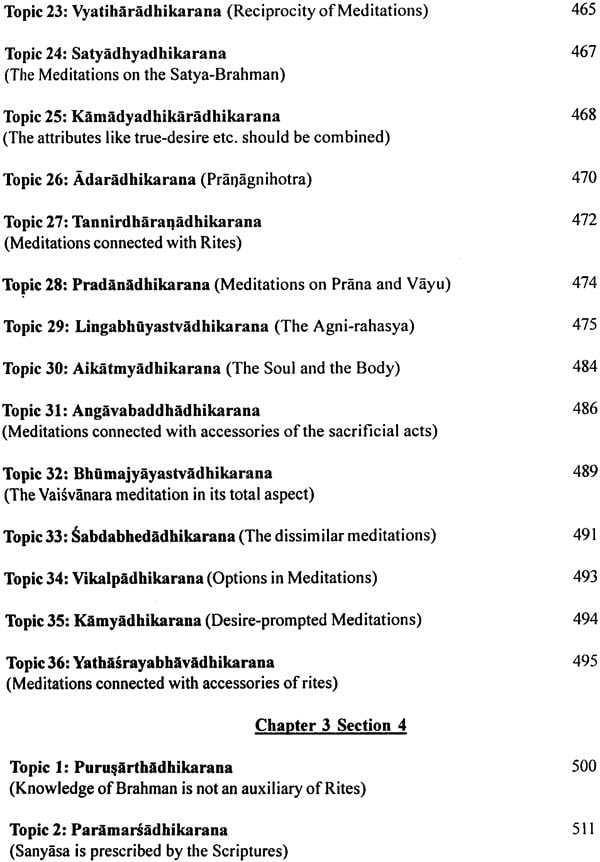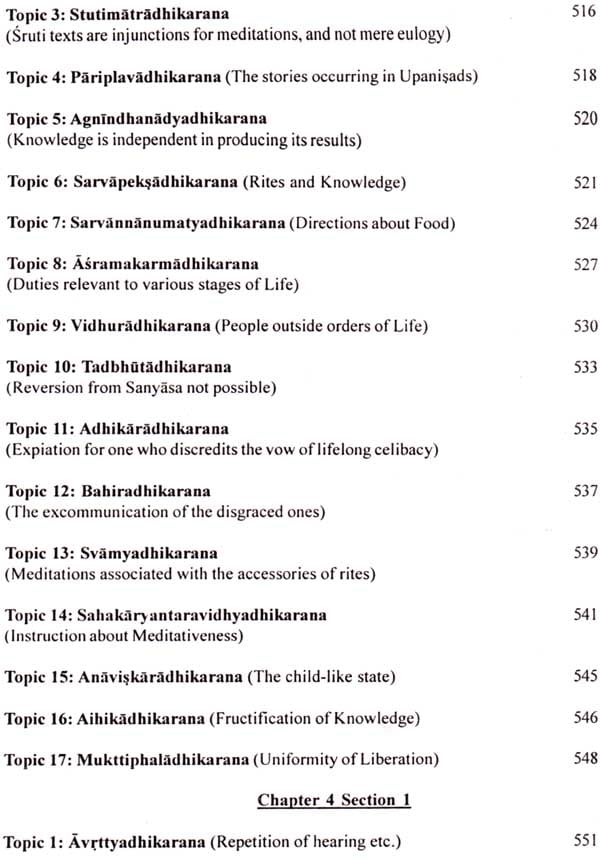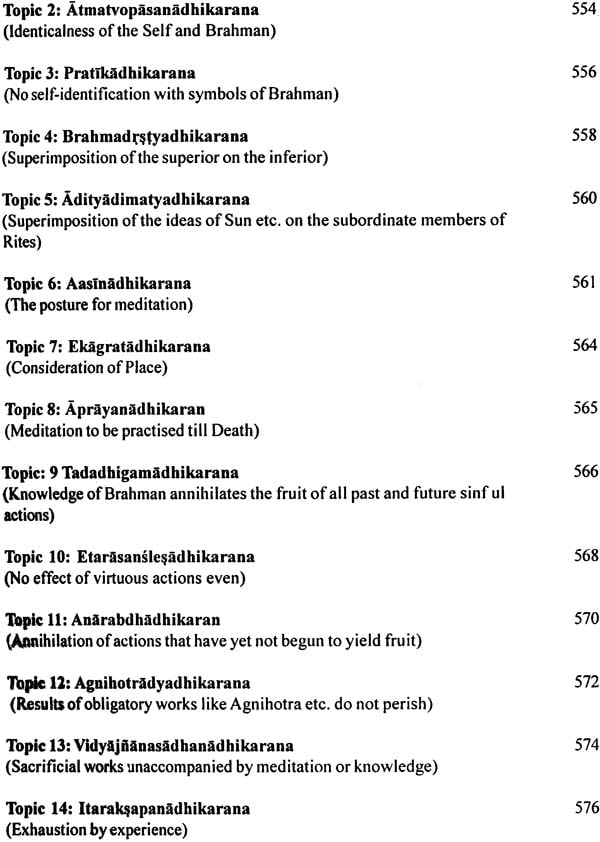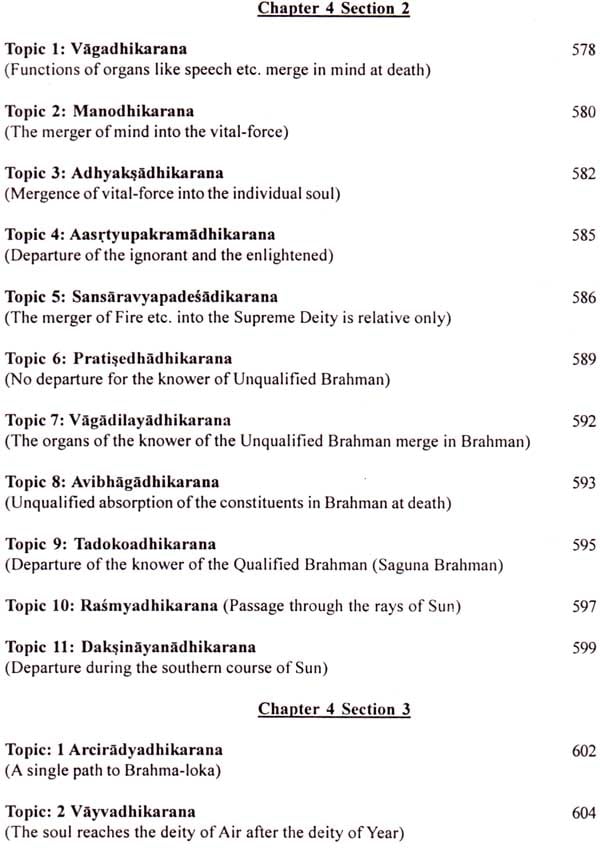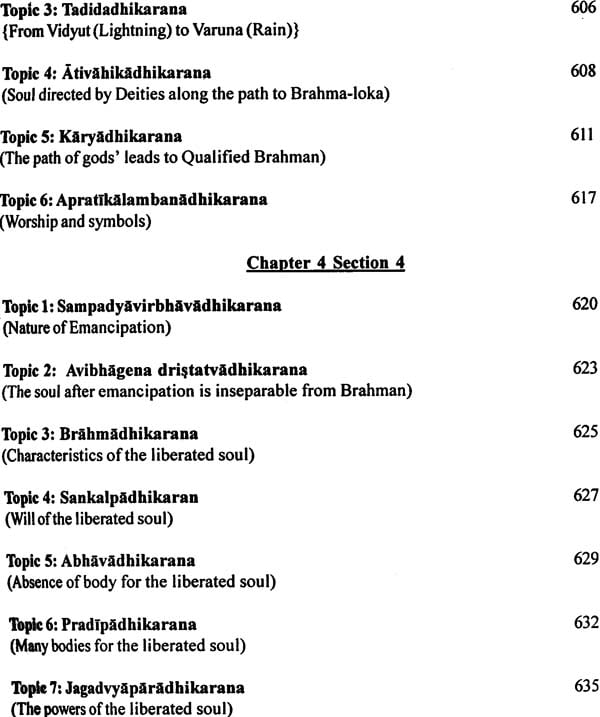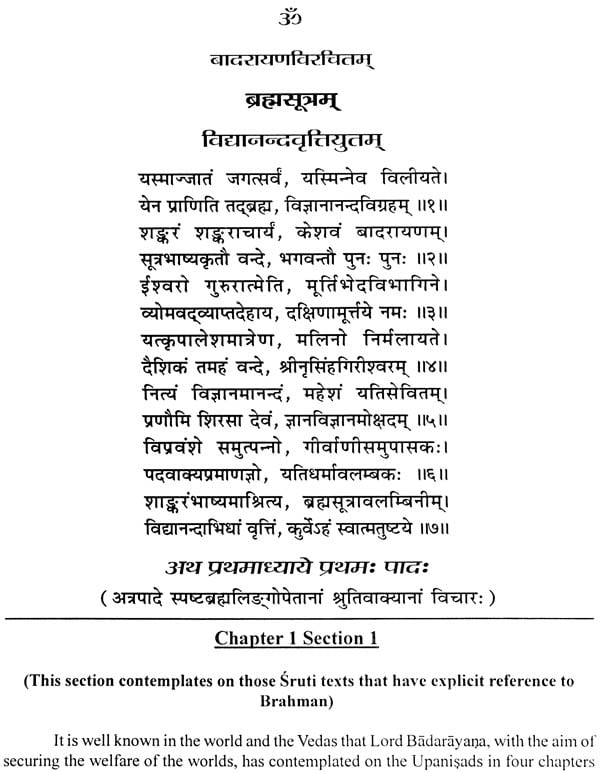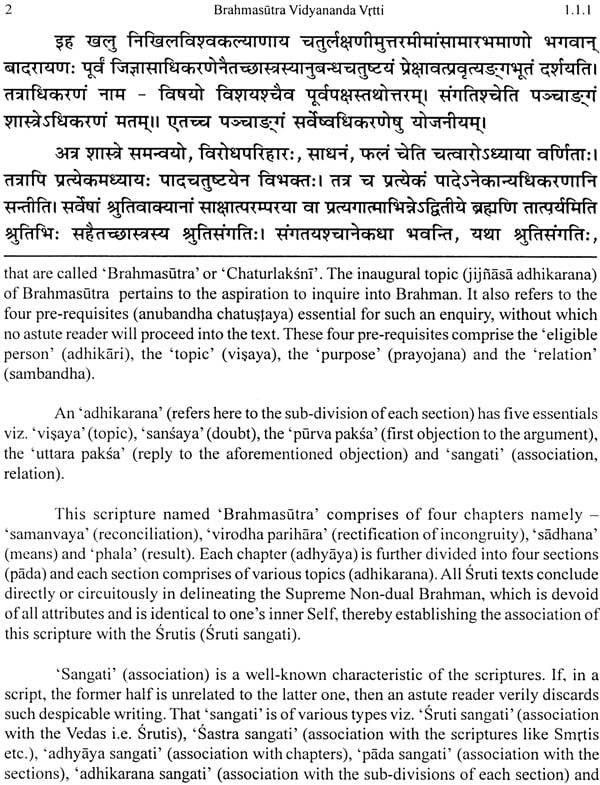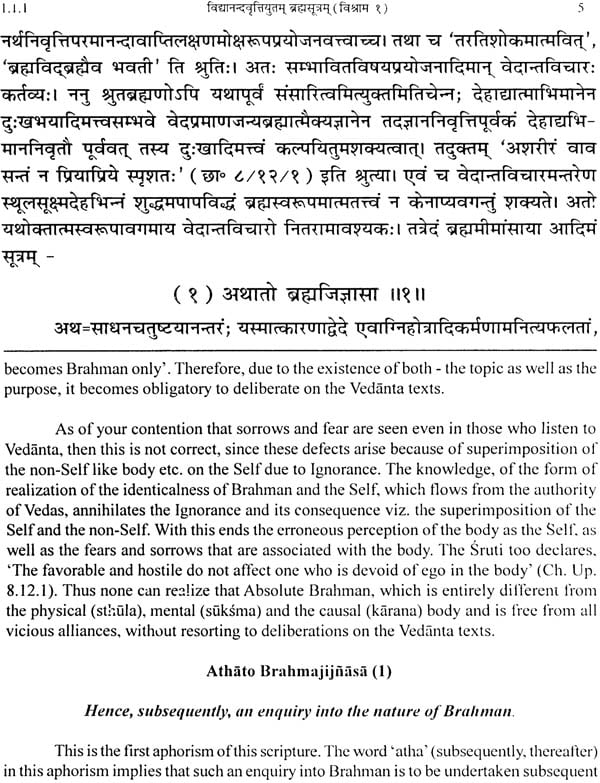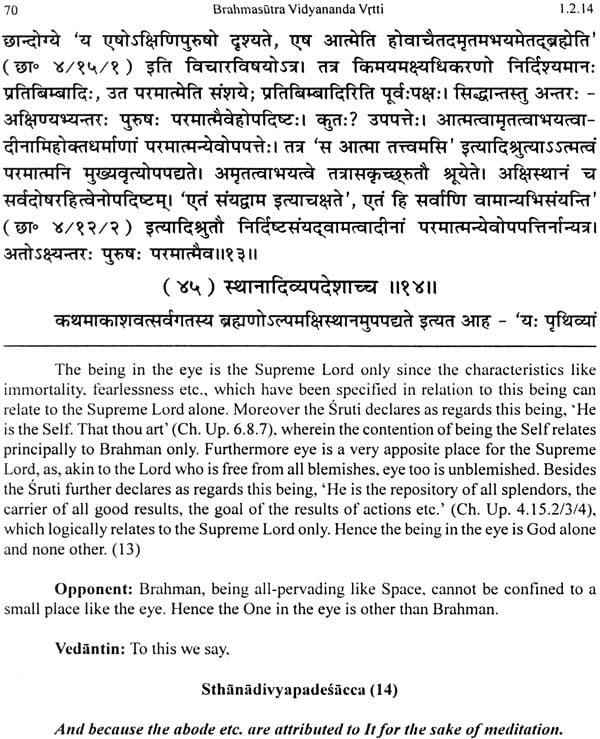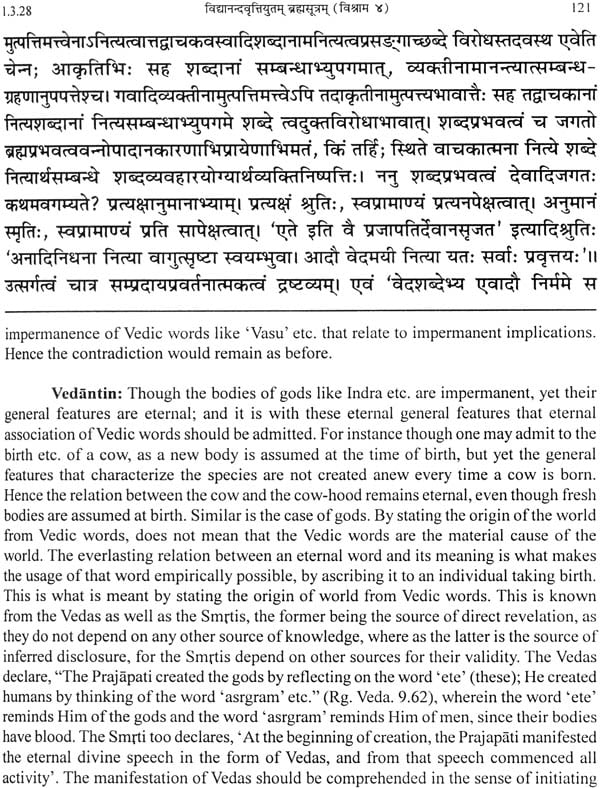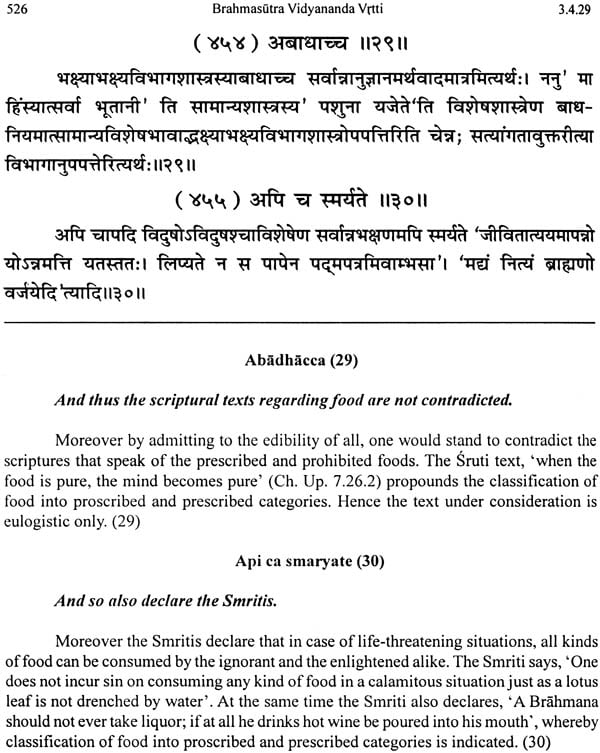
Brahmasutra with Vidyananda Vrtti (English Translation) (An old and Rare Book)
Book Specification
| Item Code: | NAH185 |
| Author: | Vidyananda Vrtti |
| Publisher: | Shri Kailash Ashram, Rishikesh |
| Language: | Sanskrit Text with English Translation |
| Edition: | 2005 |
| Pages: | 664 |
| Cover: | Hardcover |
| Other Details | 9 inch x 7 inch |
| Weight | 1.20 kg |
Book Description

<meta content="Word.Document" name="ProgId" /> <meta content="Microsoft Word 12" name="Generator" /> <meta content="Microsoft Word 12" name="Originator" /> <link href="brahmasutra_files/filelist.xml" rel="File-List" /> <link href="brahmasutra_files/item0006.xml" rel="dataStoreItem" target="brahmasutra_files/props0007.xml" /> <link href="brahmasutra_files/themedata.thmx" rel="themeData" /> <link href="brahmasutra_files/colorschememapping.xml" rel="colorSchemeMapping" /> <!--[if gte mso 9]><xml>
Foreword
H.H. Swami Vidyananda Giri Ji Maharaj
(Head Kailas Ashram Brahma-vidya Peeth, Rishikesha)
Vedas are considered to be the oldest scriptures in the whole world. These deal with three types of disciplines viz. action, meditation and knowledge to remove impurity, unsteadiness and the ignorance of mind respectively. Chastened by action and meditation the mind attains eligibility to imbibe the knowledge of oneness of Self and God through the study of Upanishads containing mainly the portion of the Vedas relating to knowledge. The sage Badarayana has summarized this procedure in the first aphorism’ Athato Brahmajigyasa’ of his famous treatise ‘Brahmasutra’. The main theme of the Brahmasutra is to remove ambiguity and establish the true import of various statements of the Upanishads as all of them directly or indirectly relate to the knowledge of the non-dual Brahman.
Although the commentary of Adi Shankaracharya and its elaboration in ‘Bhamati etc. are sufficient to understand Brahmasutra but a brief and easy work was still needed to acquaint the readers and students with the subject at hand in the Brahmasutras. Therefore I ventured to author the Vidyananda Vritti on the Brahmsutra which no doubt towed the line of Shankar Bhashya. This was first published with the Hindi translation in 1969. Its third edition was published 1995.
Meanwhile Kailas Ashram in order to benefit the English readers translated some works Ishavasya Pravachan Sudha and Bhagawad Geeta Lalita rendered by me in Hindi. Encouraged with these publications I desired that Brahmasutra Vidyananda Vritti also be translated into English. The services of Dr. Narendra Tuli who had translated the Geeta Lalita readily offered to undertake this task. He not only translated the Hindi text but improvised the help of Shankar Bhashya and my Lalita Hindi translation on Brahmasutra, keeping the simplicity and brevity of the original text intact.
I am sure that this work will be received well and would prove useful for the introduction of Brahmasutra to the English readers. When I announced the intention of publication of this, Smt. Bharati Ben Bihari Bhai Amin of Mumbai came forward voluntarily to sponsor the Bharati Edition and the Parayan Edition of Brahmasutra Vidyananda Vritti. This being an extremely pious act on her part, the blessings of Almighty Lord are sure to embrace them Blessings are also invoked for Dr. Narendra Tuli, the translator and Shri S.L. Tuli, the editor.
Introduction
The fundamental question regarding the origin of Universe and the life-process has attracted thinkers from the scientific and spiritual fields alike from times immemorial. The scientific community has done a commendable job in revealing the structure of matter and identifying the play of diverse forces in this unfathomable expanse of Space and Time. Based on their observations, they have tried to explain the origin of Universe and the life-process by putting forward various theories from time to time. These suggestions, though inconclusive in the present times, nevertheless reflect the indomitable human spirit of striving to attain the ultimate knowledge and the consequent perfection.
The spiritualists have approached the question in their own way and conclusively established the origin of the entire gamut of creation from the Supreme Lord. They have not only visualized the creation enveloped by the Space and Time, but have also contemplated upon and realized the eternal entity that is beyond the realm of Space and Tune.
I feel that any aspirant, in the current scenario, has an edge inasmuch as he has the opportunity to go about finding the answer to this fundamental question through the study of both the modem and the traditional aspects. One should seek the answer with an open mind. I personally feel that both the scientific and the spiritual aspects are complimentary to each other inasmuch as both are directed at revealing the ultimate Truth. The marriage of an intelligent scientific mind with spirituality should reveal the Truth in all its grandeur.
In order to guide the human effort to explore the ultimate Truth, various thinkers and philosophers have expounded their views regarding the approach to be adopted and the goal to be accomplished. These constitute various Schools of thoughts of this transcendental subject. Vedanta School of thought is considered to be the foremost by any impartial observer, since it is all encompassing and based on Non-Dualism.
Brahmasutra, authored by Lord Badarayana, constitutes one of the three well known Prasthanas (systems) of the Vedanta Philosophy, the other two being the Upanisads and the Bhagavad Gita, having their source as the Vedas and the Smrtis respectively. Brahmasutra is called the ‘Darsan Prasthana’, based on the philosophical thoughts of its author derived from the other two Prasthanas, Adi Sankaracarya’s commentaries on these three constitute the back- bone of the entire Vedanta doctrine. His writings are penetrating and vivid, requiring proper guidance for their full comprehension. In order to make an entry into the study of Brahmasutra as per Adi Sankaracarya’s exposition, the present head of the century old Kailas Ashram, His Holiness Swami Vidyananda Giri Ji Maharaja, had composed a Vrtti (commentary), in Sanskrit, on the Brahmasutra way back in 1969. It was published in the same year along with its Hindi translation. The present work is the English translation of the same. Effort has been made here to make the English reader comfortable with the intricate portions of the text. I feel it should provide an opportunity to the English reader to have an introduction to the Vedanta doctrine as expounded in the Brahmasutras. If so this effort would be rewarded.
I sincerely acknowledge the help and guidance of everyone involved in bringing out this work. I bow before my Guru, His Holiness Swami Vidyananda Giri Ji Maharaja, who reposed tremendous faith in me by asking me to undertake this translation. It is the result of His unrestrained blessings only that this work has seen the light of the day. Mr. S.L.Tuli, my father, who happens to be the editor of this work, deserves all thanks for ceaselessly encouraging me to accomplish this arduous task. He has conscientiously gone through both the Sanskrit and the English texts repeatedly and offered me his invaluable guidance out of his rich knowledge of Vedanta Philosophy. My wife Renu Tuli also deserves special thanks, since without her firm cooperation it would not have been possible for me to complete this mammoth job. The work is dedicated to the pious memory of my mother Smt. Pushpa Tuli.
